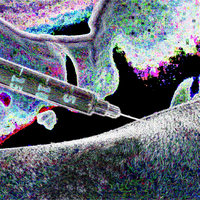| Creatine | |
|---|---|
| Salts [] | |
|---|---|
| Creatine monohydrate | |
| Creatine nitrate | |
| Creatine hydrochloride | |
| Molecular structure via molpic based on CDK |
| Physical properties [] | |
|---|---|
| Molecular mass | 131.13 g/mol [1] |
| Density | 1.33 at 25 °C g/cm3 [1] |
| Melting point | Decomposes at 303 °C [1] |
| Solubility | Slightly soluble in water, insoluble in ether [1] |
| Predicted LogP | -1.2 [1] |
| Structural Identifiers [] | |
|---|---|
| Molecular formula | C4H9N3O2 [1] |
| IUPAC name | 2-[carbamimidoyl(methyl)amino]acetic acid [1] |
| SMILES | CN(CC(=O)O)C(=N)N [1] |
| InChI | InChI=1S/C4H9N3O2/c1-7(4(5)6)2-3(8)9/h2H2,1H3,(H3,5,6)(H,8,9) [1] |
| InChIKey | CVSVTCORWBXHQV-UHFFFAOYSA-N [1] |
Creatine
Creatine (also known as Creatin, Kreatin, N-amidinosarcosine, Krebiozon, N-methyl-N-guanylglycine, Glycine, N-(aminoiminomethyl)-N-methyl-, methylglycocyamine, (α-Methylguanido)acetic acid, Pyrolysate or 2-(1-methylcarbamimidamido)acetic acid) is a
Chemistry
Salts []
Stereochemistry []
Creatine is a achiral mixture
See also []
External links []
References []
National Center for Biotechnology Information. PubChem Compound Summary for CID 586, Creatine. Accessed August 19, 2025. https://pubchem.ncbi.nlm.nih.gov/compound/586
U.S. Food and Drug Administration; National Center for Advancing Translational Sciences. Creatine. UNII: MU72812GK0. Global Substance Registration System. Accessed August 19, 2025. https://gsrs.ncats.nih.gov/ginas/app/beta/substances/MU72812GK0
 Anodyne
Anodyne